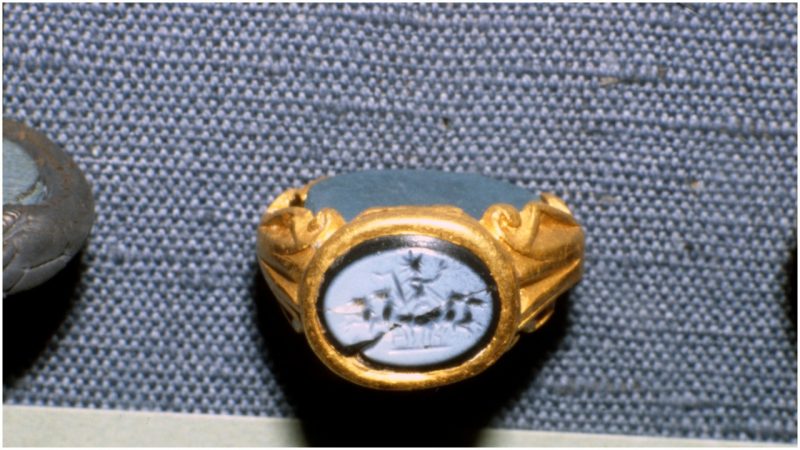
Searching for valuables from the Roman age in the fields of England is a popular pastime — if a frustrating one for many who pursue dreams of glory. But for one amateur with a metal detector, the search just paid off big time, with the discovery of a Roman gold signet ring believed to date to the 3rd century AD in a Somerset field.
“The 48g ring was uncovered at the same site, in Crewkerne, where a rare Roman lead-lined coffin was found,” reported the BBC. “It’s thought to be 24-carat gold with an onyx engraving of the God of Victory.”
Jason Massey, a 45-year-old pest control officer, found the rare piece of jewelry. It is thought to have belonged to someone of high status.
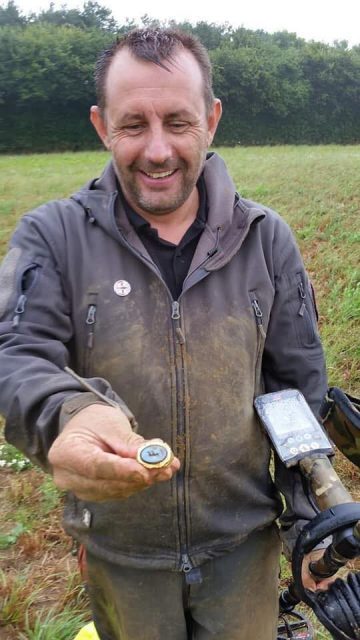
Jason Massey with the Roman ring. Photo by David Hall / Jason Massey / Facebook
The ring is now with the British Museum in order for experts to evaluate it further.
“Mr Massey, who served in the British armed forces from 1989 to 1992, made the find at a site believed to have once been a high-status Roman villa as part of a charitable dig with the ‘Detecting for Veterans’ group,” reported the Daily Mail. “The Somerset Archaeological team think we have found a very high-status villa complex, but more investigative work is needed.”
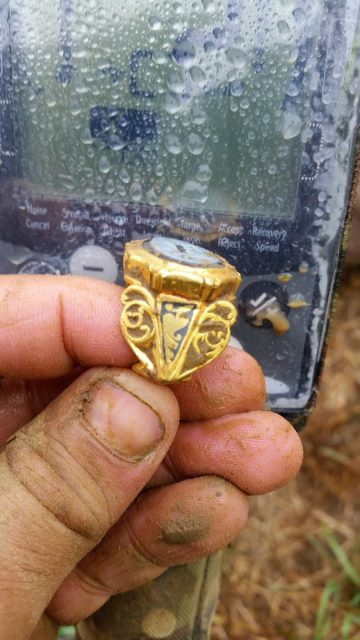
It is believed the ring belonged to a very high ranking Roman Army commander. Photo by Jason Massey/Facebook
Massey himself posted about his discovery on Facebook in late July 2018:
“I had a very quick organized meeting with the Somerset Archaeological team and head of Somerset Museum this morning after I begged them to see me as I wanted them to see the ring. WOW were they surprised, oh yes they were gobsmacked and all of them have never seen anything like this ring at all in this country.”
Massey stated that after 10 minutes of looking at the ring the theories started rolling in. One was that it came from a very wealthy villa owner on the site, another was that it belonged to a high ranking Roman army commander living in the villa complex. The team surmised the ring could either be from Rome itself or from Africa where the commander could have been stationed.
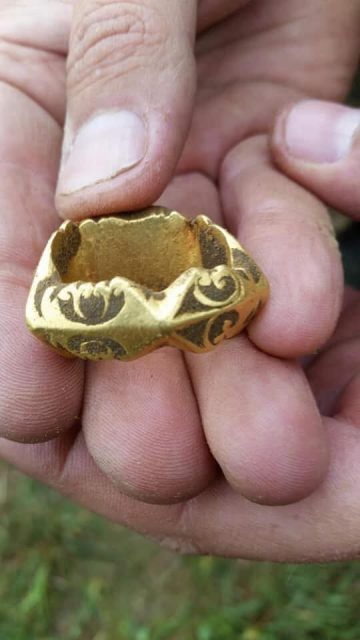
Photo by David Hill/Jason Massey/Facebook
Fate is not always so kind to the searchers.
In February 2018 two middle-aged friends with a metal detector thought they had found treasure in a field in Suffolk, only to have their dreams of riches ruined by reality — and in a painful twist, it was a television series featuring two fictional men with a metal detector that turned their ecstasy into embarrassment.
Paul Adams and Andy Sampson, who work together delivering oxygen to medical patients, were making their way through the field in question when Adams uncovered a gold coin. He called for Sampson, and the two of them found another coin, then another. Shouting, “Roman gold! Roman gold!” the friends gathered 54 coins in total.
“We sat there in total disbelief,” Sampson said in an interview.
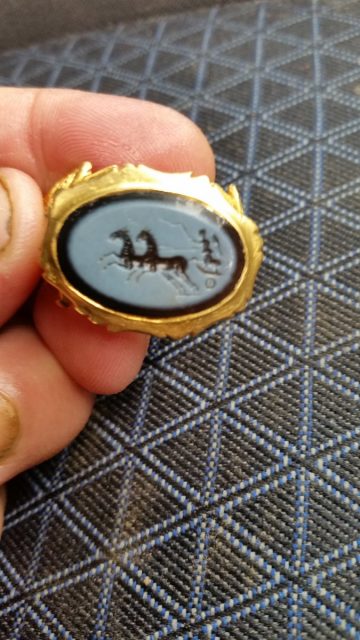
The ring could be from Rome itself or from Africa. Photo by Jason Massey/Facebook
The men identified six Emperor Nero coins and, calculating they were worth about close to $40,000 each, it seemed clear that the friends were about to be rich. “I was paying off my mortgage and buying a sports car in my head,” said Sampson. “We thought we were looking at the real McCoy.” The two of them began dancing in the field.
The next day, they showed their stash to a friend who had 40 years’ experience with a metal detector and is a member of the Suffolk Archaeological Survey, and he was forced to break the bad news: The coins did not look like genuine Roman currency. Soon after that, Adams and Sampson learned that the TV comedy Detectorists had used the Suffolk field a year ago as a location for one of its episodes.
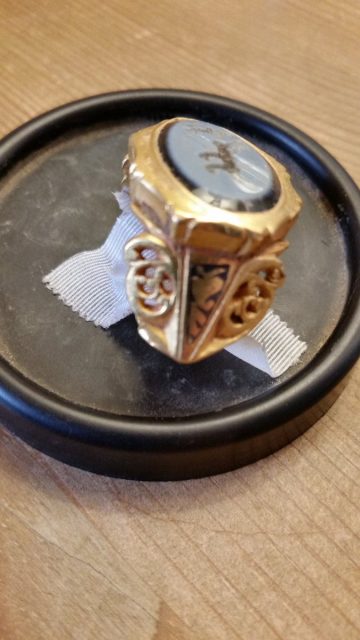
Massey himself posted about his discovery on Facebook. Photo by Jason Massey/Facebook
Detectorists is a BBC 4 comedy series about two friends, played by Mackenzie Crook and Toby Jones, who have a common dream: finding a priceless collection of items that would “cement their place in detecting history.”
The pals’ hoard of prop coins was evaluated to be about $300.
